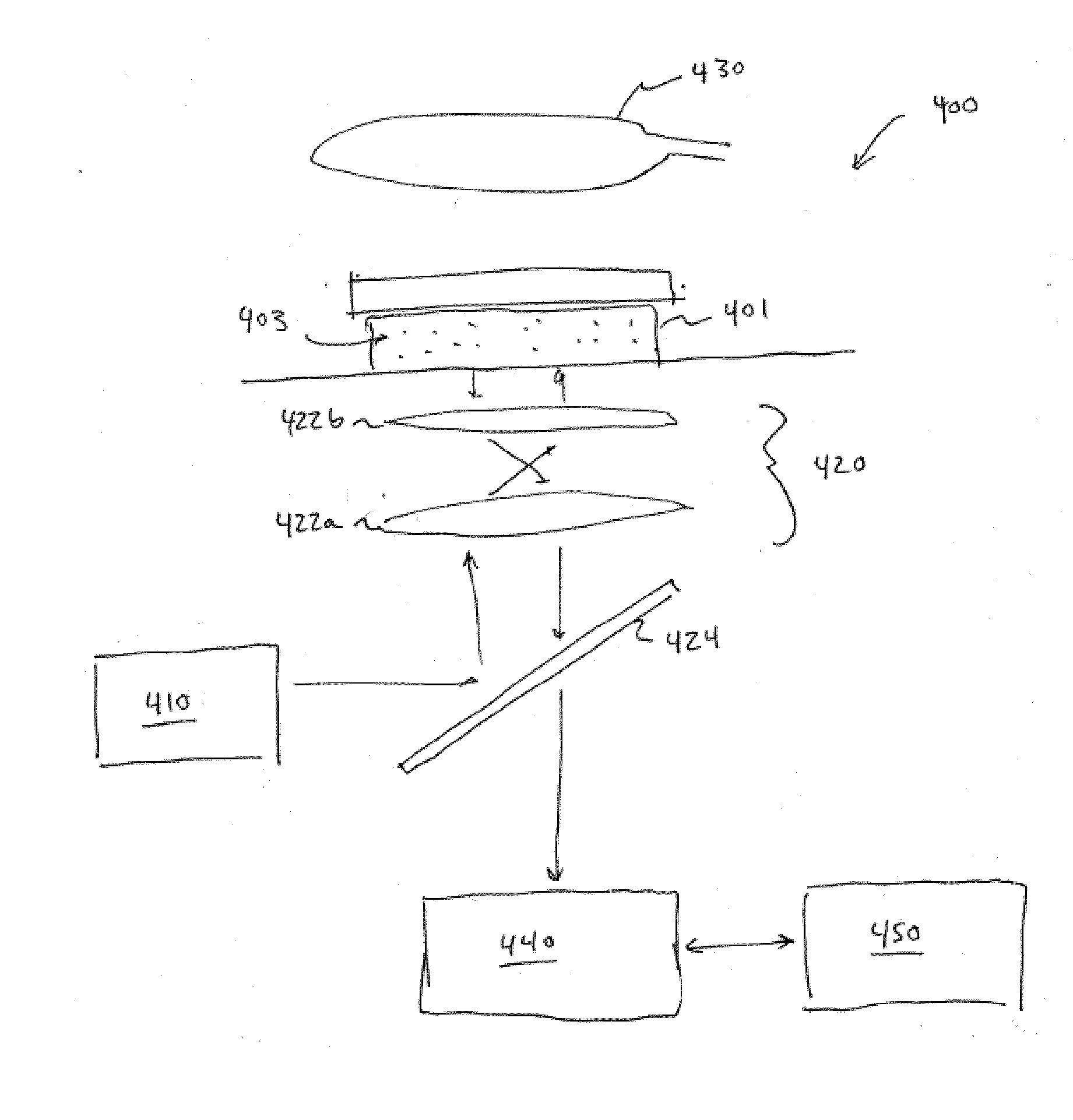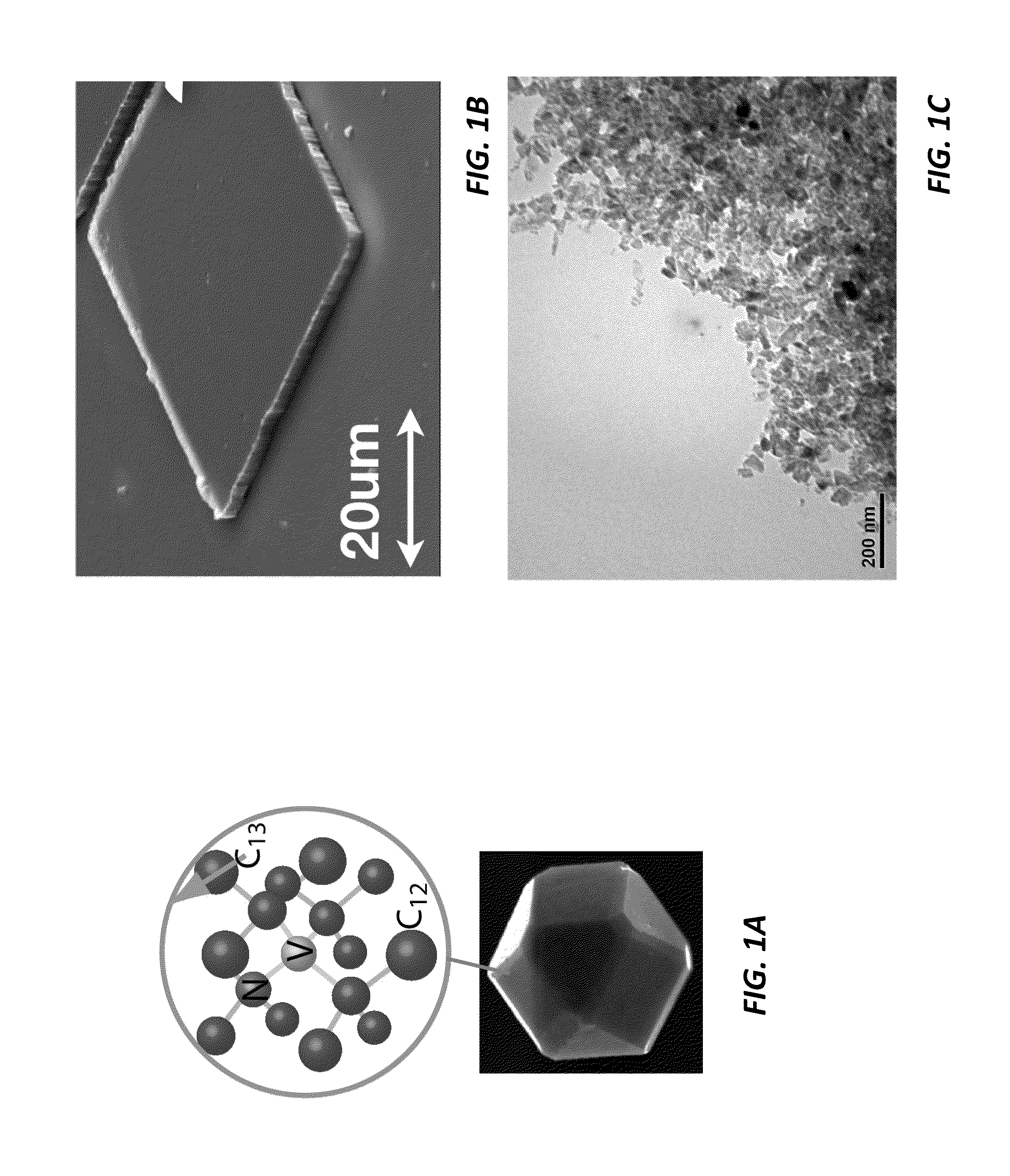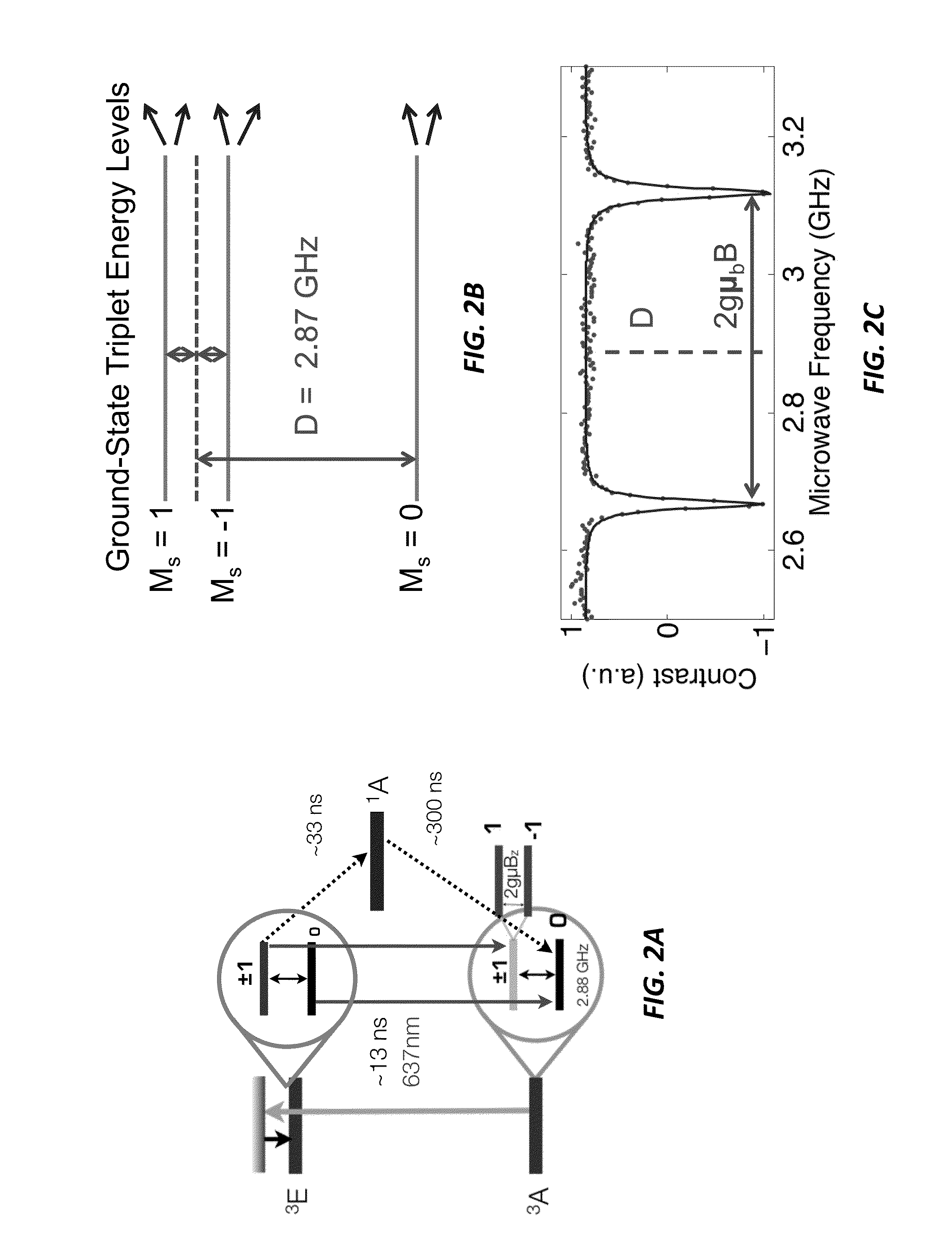Wide-field imaging using nitrogen vacancies
a wide-field imaging and nitrogen vacancy technology, applied in the direction of fluorescence/phosphorescence, luminescent dosimeters, optical radiation measurement, etc., can solve the problems of not being able to estimate the position of an nv with a resolution below the diffraction-limited resolution, and not being able to solve individual nvs
- Summary
- Abstract
- Description
- Claims
- Application Information
AI Technical Summary
Benefits of technology
Problems solved by technology
Method used
Image
Examples
Embodiment Construction
[0037]Embodiments of the present invention include methods and systems for time-resolved spin readout of nitrogen vacancies (NVs) and other color centers without fast gating or shuttering of the detector. One example includes time-resolved optically detected magnetic resonance (ODMR) imaging in NVs with an excitation and readout sequence in which the initialization and readout pulses are combined into a single pulse. This excitation and readout sequence, or measurement sequence, obviates the need for gating or shuttering the photodetector that detects the color centers' emissions during initialization.
[0038]Because these measurements do not involved gating or shuttering the photodetector, they can be performed with a standard detector, such as those in standard fluorescence microscopes. They do not necessarily involve modulating the fluorescence detection with gated cameras (e.g., intensified charge coupled devices (CCDs)), synchronized mechanical chopper wheels, electro-optic or ac...
PUM
 Login to View More
Login to View More Abstract
Description
Claims
Application Information
 Login to View More
Login to View More - R&D
- Intellectual Property
- Life Sciences
- Materials
- Tech Scout
- Unparalleled Data Quality
- Higher Quality Content
- 60% Fewer Hallucinations
Browse by: Latest US Patents, China's latest patents, Technical Efficacy Thesaurus, Application Domain, Technology Topic, Popular Technical Reports.
© 2025 PatSnap. All rights reserved.Legal|Privacy policy|Modern Slavery Act Transparency Statement|Sitemap|About US| Contact US: help@patsnap.com



